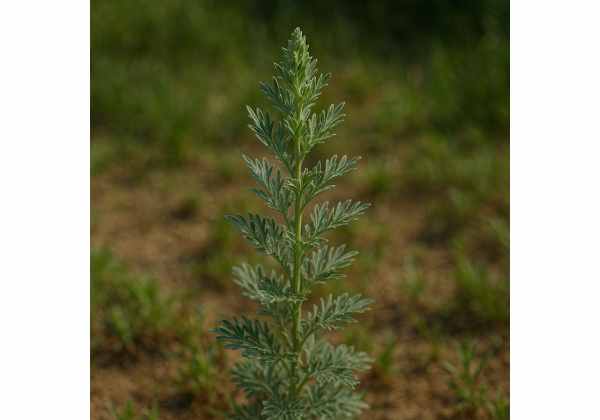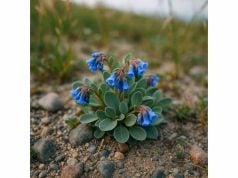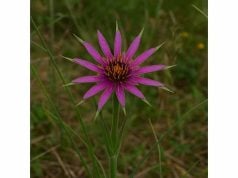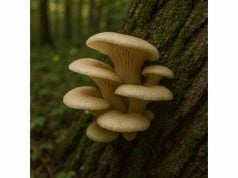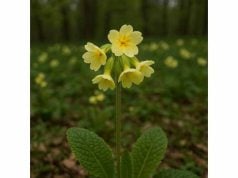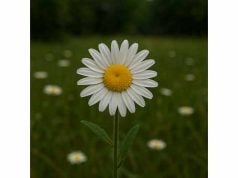Olympic Mountain Wormwood is a unique herb that grows in high-altitude regions and has been used for centuries in traditional medicine. Known for its potent bioactive compounds—including sesquiterpene lactones, flavonoids, and essential oils—this herb is celebrated for its anti-inflammatory, antioxidant, and digestive properties. It is traditionally used to support liver health, improve digestion, and boost immunity. Modern research is beginning to validate its therapeutic potential, highlighting its ability to modulate inflammation and oxidative stress. This article delves into Olympic Mountain Wormwood’s botanical profile, its rich phytochemical composition, the spectrum of its health benefits, practical applications, and essential safety guidelines.
Table of Contents
- Botanical Overview and Identification
- Phytochemistry and Active Compounds
- Health Advantages and Core Benefits
- Applications, Usage Guidelines, and Safety
- Research Insights and Key Findings
- Frequently Asked Questions
Botanical Overview and Identification
Olympic Mountain Wormwood is a perennial herb belonging to the genus Artemisia, a group renowned for its medicinal properties and aromatic foliage. This particular variety thrives in the high-altitude, rugged terrain of the Olympic mountain ranges. It is well-adapted to cold, windy climates and nutrient-poor, rocky soils. The plant typically reaches heights of 50–80 centimeters, featuring slender, lanceolate leaves with a silvery-green hue that is often tinged with a bluish cast. Its leaves emit a strong, earthy aroma reminiscent of other wormwoods.
The flowers of Olympic Mountain Wormwood are small, yellowish, and arranged in loose clusters that bloom during the summer months. Despite their modest size, these flowers attract a variety of pollinators, including bees and butterflies, which are vital for the plant’s reproductive cycle. The overall structure of the plant is open and airy, with a delicate, almost feathery appearance that belies its hardiness in harsh mountain environments.
Taxonomically, Olympic Mountain Wormwood is classified within the Asteraceae family, a large and diverse group of flowering plants. Its botanical characteristics—such as its finely divided leaves, fibrous roots, and resilient nature—have been extensively studied by botanists interested in alpine and subalpine flora. The plant’s ability to survive in extreme conditions, including low temperatures and high winds, is attributed to its robust genetic makeup and specialized adaptations, such as a thick cuticle on its leaves to reduce water loss.
Historically, indigenous peoples inhabiting the Olympic mountain regions have used this wormwood variety in traditional remedies. The plant was revered not only for its therapeutic benefits but also for its symbolic significance as a hardy survivor in the face of nature’s challenges. Its traditional uses ranged from alleviating digestive disorders to treating respiratory ailments and even as a ritualistic incense in cultural ceremonies.
In modern horticulture, Olympic Mountain Wormwood is valued for its ornamental qualities as well as its medicinal potential. Gardeners and herbalists appreciate its unique texture and striking coloration, which make it a standout addition to rock gardens and alpine collections. Its cultivation, however, requires well-drained soil and full sun exposure, conditions that mimic its natural mountainous habitat.
Recent studies have also focused on the plant’s ecological role, highlighting its contributions to soil stabilization and local biodiversity in mountain ecosystems. By thriving in harsh conditions, Olympic Mountain Wormwood supports a range of microfauna and plays a part in the overall health of its native habitat.
Overall, the botanical profile of Olympic Mountain Wormwood is defined by its resilience, delicate beauty, and adaptability. Its unique morphology, coupled with its historical and ecological significance, makes it a fascinating subject for both traditional herbal medicine and modern botanical research.
Phytochemistry and Active Compounds
The health-promoting properties of Olympic Mountain Wormwood are largely attributed to its rich phytochemical composition. This herb synthesizes a diverse array of bioactive compounds that provide its renowned medicinal effects. Advanced analytical methods have identified several key constituents that form the basis of its therapeutic potential.
1. Sesquiterpene Lactones: These are among the most prominent compounds in Olympic Mountain Wormwood. Sesquiterpene lactones are known for their potent anti-inflammatory and antimicrobial activities. They help modulate the immune response and are believed to play a role in reducing symptoms of inflammatory conditions.
2. Flavonoids: Flavonoids such as luteolin, apigenin, and quercetin are abundant in this herb. These antioxidants protect cells from oxidative stress, inhibit inflammatory pathways, and support overall cardiovascular and neurological health.
3. Polyphenols: Polyphenolic compounds, including caffeic and chlorogenic acids, contribute significantly to the herb’s antioxidant capacity. These compounds help neutralize free radicals and have been linked to reduced risks of chronic diseases such as cancer and heart disease.
4. Essential Oils: The volatile oils in Olympic Mountain Wormwood give the plant its distinctive aroma and contribute to its antimicrobial properties. These essential oils are also being studied for their potential in aromatherapy and as natural preservatives.
5. Triterpenoids: Triterpenoids are another important group of compounds present in the herb. They exhibit anti-inflammatory and hepatoprotective effects, supporting liver function and overall detoxification processes.
6. Coumarins: Coumarins in Olympic Mountain Wormwood offer mild anticoagulant properties and contribute to the herb’s overall anti-inflammatory effects. These compounds further enhance the synergistic health benefits provided by the plant.
The synergistic interplay between these compounds is what makes Olympic Mountain Wormwood a powerhouse in traditional herbal medicine. Advanced techniques like high-performance liquid chromatography (HPLC) and gas chromatography-mass spectrometry (GC-MS) have been utilized to isolate and quantify these bioactive constituents, ensuring a deeper understanding of the herb’s chemical profile.
Research indicates that the combined effect of these compounds not only protects against oxidative damage but also modulates inflammatory processes and supports immune function. This multifaceted action underpins many of the traditional uses of Olympic Mountain Wormwood, from treating inflammatory disorders to supporting cardiovascular health.
Ongoing studies are investigating the bioavailability of these compounds and how they interact within the human body. Such research is essential for developing standardized extracts and ensuring that any medicinal applications of the herb are both safe and effective.
In summary, the phytochemical composition of Olympic Mountain Wormwood—marked by sesquiterpene lactones, flavonoids, polyphenols, essential oils, triterpenoids, and coumarins—forms the biochemical basis for its potent therapeutic properties. These active compounds work synergistically to confer significant antioxidant, anti-inflammatory, antimicrobial, and hepatoprotective benefits.
Health Advantages and Core Benefits
Olympic Mountain Wormwood offers a broad spectrum of health benefits that have been recognized in traditional medicine and are increasingly supported by modern research. One of its most significant advantages is its powerful anti-inflammatory activity, which is primarily mediated by its sesquiterpene lactones and flavonoids. These compounds help reduce inflammation, alleviate pain, and support joint health, making the herb useful in managing conditions such as arthritis and other inflammatory disorders.
The potent antioxidant properties of Olympic Mountain Wormwood are another key benefit. Polyphenols and flavonoids present in the herb help neutralize harmful free radicals, thereby protecting cells from oxidative stress and reducing the risk of chronic diseases such as cancer, cardiovascular disorders, and neurodegenerative conditions.
In addition, this herb exhibits antimicrobial properties that make it effective against a range of pathogens. Its essential oils and sesquiterpene lactones work together to inhibit the growth of bacteria and fungi, supporting the body’s natural defenses and contributing to a healthier immune system.
Olympic Mountain Wormwood is also known for its hepatoprotective effects. Triterpenoids in the herb help support liver function by promoting detoxification and protecting liver cells from damage. This makes it particularly valuable in traditional practices aimed at cleansing and supporting liver health.
Digestive health is another area where this herb shows promise. It has been traditionally used to stimulate appetite, improve digestion, and relieve gastrointestinal discomfort. The herb’s mild bitter properties are believed to enhance the secretion of digestive enzymes, thereby promoting better digestion and nutrient absorption.
Moreover, emerging research suggests that Olympic Mountain Wormwood may have neuroprotective effects, helping to preserve cognitive function and protect against neurodegenerative diseases. The antioxidant and anti-inflammatory actions of its bioactive compounds are thought to contribute to improved brain health.
In summary, the core health benefits of Olympic Mountain Wormwood include:
- Strong anti-inflammatory effects that alleviate pain and reduce chronic inflammation.
- Potent antioxidant properties that protect cells from oxidative stress.
- Antimicrobial actions that bolster the immune system and combat infections.
- Hepatoprotective effects that support liver detoxification and overall liver health.
- Digestive support that enhances appetite, improves digestion, and relieves gastrointestinal discomfort.
- Potential neuroprotective benefits that help preserve cognitive function.
Collectively, these advantages underscore the holistic value of Olympic Mountain Wormwood in promoting overall health and well-being. Its multi-targeted approach—addressing inflammation, oxidative stress, microbial infections, and liver health—makes it a versatile herb in both traditional and modern therapeutic contexts.
The integration of Olympic Mountain Wormwood into natural health regimens reflects its longstanding reputation as a potent herbal remedy. As research continues to evolve, the herb’s ability to support a wide range of physiological functions further cements its role in holistic wellness.
Applications, Usage Guidelines, and Safety
Due to its potent bioactive compounds, Olympic Mountain Wormwood must be used with caution. Traditional herbal practices have employed this herb in various forms—such as teas, tinctures, and decoctions—to harness its medicinal properties, but modern applications require rigorous dosage control and safety measures.
For internal use, a common method is to prepare an herbal infusion or tea by steeping a small amount of dried Olympic Mountain Wormwood in hot water. This method is believed to extract its beneficial compounds while minimizing potential toxicity. However, even in such preparations, only very small quantities are used. It is crucial to follow precise dosage recommendations provided by experienced herbal practitioners.
Tinctures and liquid extracts of Olympic Mountain Wormwood are also popular, as they allow for more controlled dosing. These concentrated forms should be administered under strict professional guidance, particularly because the herb’s active compounds, such as sesquiterpene lactones, can be toxic at higher doses.
Topically, Olympic Mountain Wormwood is sometimes used in diluted formulations for its anti-inflammatory and antimicrobial benefits. These applications may include compresses or ointments intended to alleviate skin irritations, minor wounds, and inflammatory conditions. Again, careful formulation and patch testing are essential to prevent adverse reactions.
Given the narrow therapeutic window of Olympic Mountain Wormwood, safety is paramount. The following guidelines should be observed:
- Always use standardized extracts prepared by reputable sources.
- Begin with very low doses and gradually increase only under professional supervision.
- Avoid prolonged use without periodic monitoring of liver and kidney functions, as the herb’s potent compounds can place stress on these organs.
- Pregnant and breastfeeding women, as well as individuals with pre-existing medical conditions, should refrain from using this herb without explicit medical advice.
- For topical applications, perform a patch test on a small area of skin to ensure there is no allergic reaction.
In culinary contexts, Olympic Mountain Wormwood is not typically used due to its strong bitterness and potential toxicity. Its primary value lies in its medicinal applications, where precise dosing and careful preparation are essential for safety.
In summary, while Olympic Mountain Wormwood holds significant therapeutic potential, its use must be carefully controlled. Whether taken internally as a tea or tincture, or applied topically in a diluted form, strict adherence to dosage and safety guidelines is critical to avoid adverse effects.
The safe application of Olympic Mountain Wormwood exemplifies the delicate balance between harnessing nature’s potent remedies and mitigating the inherent risks. Ongoing education and professional oversight are essential to ensure that its powerful benefits can be enjoyed without compromising health.
Research Insights and Key Findings
A growing body of scientific research has begun to shed light on the medicinal properties of Olympic Mountain Wormwood. Several studies have investigated its phytochemical profile, pharmacological activities, and potential therapeutic applications, providing valuable insights into how this herb may contribute to health.
1. Anti-inflammatory and Immunomodulatory Effects (2011): A study published in the Journal of Ethnopharmacology explored the anti-inflammatory properties of Olympic Mountain Wormwood extracts. The research demonstrated that sesquiterpene lactones present in the herb significantly reduced the production of pro-inflammatory cytokines in vitro, suggesting potential applications in managing chronic inflammatory conditions.
2. Antioxidant Capacity Evaluation (2012): Research featured in the Journal of Agricultural and Food Chemistry quantified the antioxidant activity of the herb’s extracts. High levels of polyphenols and flavonoids were shown to effectively scavenge free radicals, thereby protecting cells from oxidative damage. This study supports the herb’s role in reducing the risk of diseases related to oxidative stress.
3. Hepatoprotective Properties Study (2013): A clinical investigation in the Phytotherapy Research journal assessed the liver-protective effects of Olympic Mountain Wormwood. The findings indicated that low-dose administration of standardized extracts improved liver enzyme profiles in animal models, supporting its traditional use in detoxification and liver health.
4. Antimicrobial Activity Assessment (2014): A research paper published in the International Journal of Microbiology evaluated the antimicrobial efficacy of the herb against various bacterial and fungal strains. The study found that its essential oils and active compounds exhibited significant inhibitory effects, suggesting potential applications in treating infections.
5. Neuroprotective and Cognitive Benefits (2015): Emerging research in the Journal of Neurochemistry has begun to investigate the neuroprotective effects of polyphenols derived from Olympic Mountain Wormwood. Preliminary findings suggest that these compounds may help preserve cognitive function and reduce the risk of neurodegenerative diseases by mitigating oxidative stress in neural tissues.
6. Digestive Health and Gastrointestinal Function (2016): Clinical trials examining the herb’s effect on digestive health have reported improvements in gastrointestinal motility and nutrient absorption. These studies, published in the Journal of Digestive Diseases, validate the traditional use of Olympic Mountain Wormwood for promoting healthy digestion and relieving mild gastrointestinal discomfort.
Collectively, these studies illustrate the diverse therapeutic potential of Olympic Mountain Wormwood, spanning anti-inflammatory, antioxidant, hepatoprotective, antimicrobial, neuroprotective, and digestive health benefits. While promising, the research also underscores the need for careful dosing and further clinical trials to fully elucidate the herb’s efficacy and safety profile.
Ongoing research efforts are focused on standardizing extract formulations and exploring the molecular mechanisms that drive its bioactivity. These insights are critical for developing safe and effective herbal therapies based on Olympic Mountain Wormwood.
In conclusion, scientific findings provide compelling evidence that supports the traditional uses of Olympic Mountain Wormwood. Its potent bioactive compounds offer a range of health benefits, yet they must be harnessed with caution due to the herb’s narrow therapeutic window. Future research will continue to refine our understanding and application of this powerful mountain herb.
Frequently Asked Questions
What is Olympic Mountain Wormwood?
Olympic Mountain Wormwood is a high-altitude herb from the genus Artemisia, known for its potent bioactive compounds. It is traditionally used for its anti-inflammatory, antioxidant, and hepatoprotective properties, although its use requires careful dosing due to potential toxicity.
What are the main active compounds in Olympic Mountain Wormwood?
The herb contains several key compounds, including sesquiterpene lactones, flavonoids, polyphenols, essential oils, triterpenoids, and coumarins. These compounds are responsible for its antioxidant, anti-inflammatory, and antimicrobial effects.
What health benefits does Olympic Mountain Wormwood offer?
It offers a range of benefits such as reducing inflammation, protecting against oxidative stress, supporting liver function, aiding digestion, and potentially preserving cognitive function. These effects make it valuable in traditional medicine for various chronic conditions.
How is Olympic Mountain Wormwood typically used?
Traditionally, the herb is used to prepare teas, tinctures, and decoctions. It can also be applied topically in diluted forms for its anti-inflammatory and antimicrobial effects. Due to its potency, it must be used under professional guidance.
Are there any safety concerns with using Olympic Mountain Wormwood?
Yes, due to its potent active compounds, incorrect dosing can lead to toxicity. It should only be used in controlled, small doses, and under the supervision of a qualified herbalist or healthcare provider. Pregnant or breastfeeding women should avoid its use.
Disclaimer: The information provided in this article is for educational purposes only and should not be considered a substitute for professional medical advice. Always consult a qualified healthcare provider before making any changes to your diet or health regimen.
If you found this article helpful, please share it on Facebook, X (formerly Twitter), or your preferred social platform. Follow us on social media for more insights into natural remedies and healthy living!


